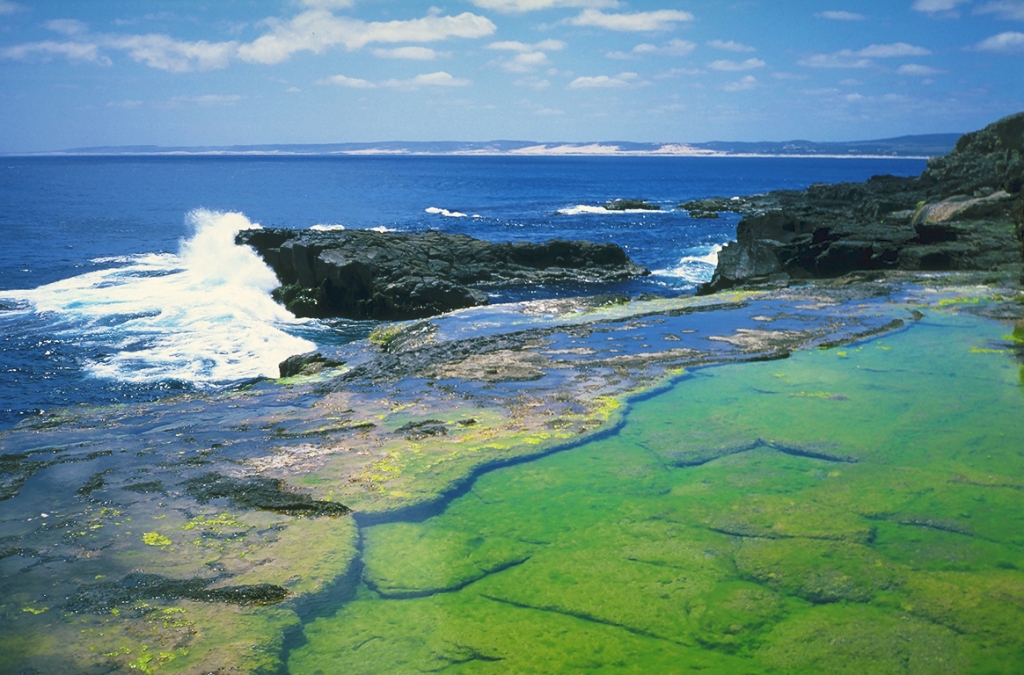Some billions of years ago
In pools such as these
On the shores of a boiling sea
From the humblest beginnings
A miracle still
Such simple creatures
Would become the miracle, me
The Great Ocean Road
Near Portland
Victoria, Australia
Taken during travels, 1995
“Such simple creatures” were the first living things to engineer climate change on Earth, unleashing perhaps the planet’s most catastrophic extinction event. They did it without massive industrialisation. Cyanobacteria converted sunlight to energy and oxygen, the latter of which killed off almost everything dependent on an atmosphere rich in carbon dioxide and other gases. From Wikipedia:
Cyanobacteria, which appeared about 200 million years before the GOE, began producing oxygen by photosynthesis. Before the GOE, any free oxygen they produced was chemically captured by dissolved iron or organic matter. The GOE was the point when these oxygen sinks became saturated and could not capture all of the oxygen that was produced by cyanobacterial photosynthesis. After the GOE, the excess free oxygen started to accumulate in the atmosphere.
Free oxygen is toxic to obligate anaerobic organisms, and the rising concentrations may have wiped out most of the Earth’s anaerobic inhabitants at the time. Cyanobacteria were therefore responsible for one of the most significant extinction events in Earth’s history. But research have shown that microbial mats of oxygen-producing microbes will produce a thin layer, one or two millimeters thick, of oxygenated water in an otherwise anoxic environment even under thick ice, and before oxygen started accumulating in the atmosphere, organisms living on these mats would already be adapted to being exposed to oxygen. Additionally, the free oxygen reacted with atmospheric methane, a greenhouse gas, greatly reducing its concentration and triggering the Huronian glaciation, possibly the longest snowball Earth episode in the Earth’s history.
Eventually, aerobic organisms began to evolve, consuming oxygen and bringing about an equilibrium in its availability. Free oxygen has been an important constituent of the atmosphere ever since.
But here we are, billions of years later, simple organisms transforming the planet, creators of the next great extinction event.
So it began…
